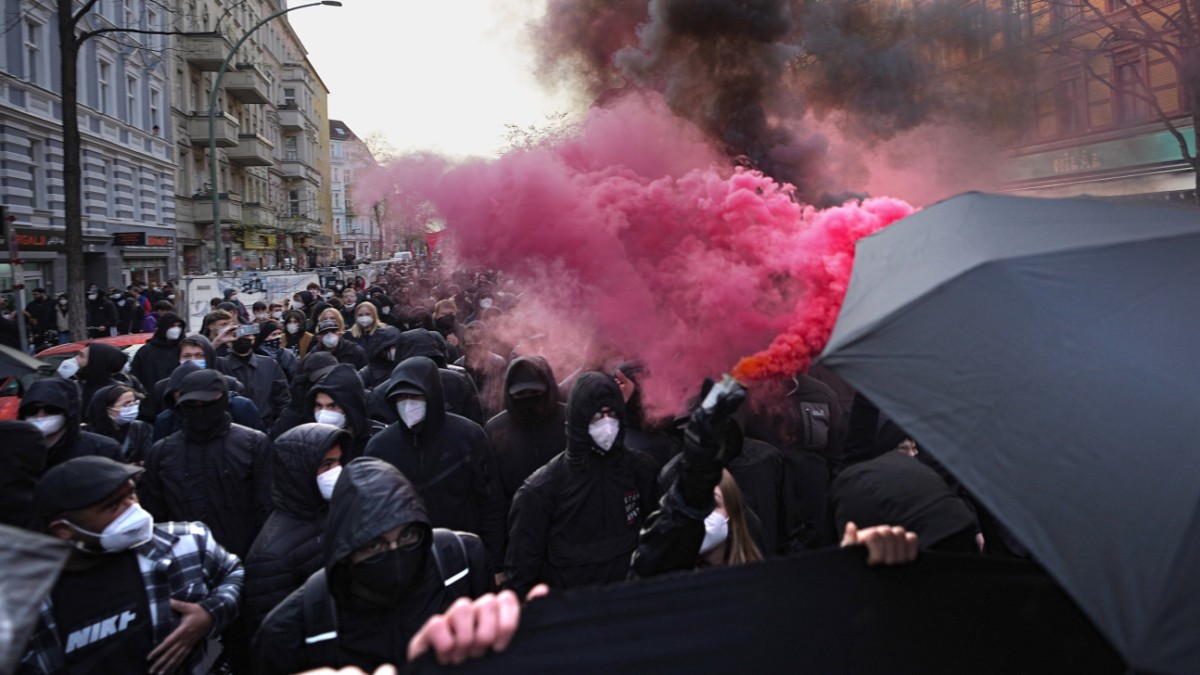Later at noon, police chief Barbara Slowik had made herself a picture of May 1st in Berlin. Surrounded by a small entourage of officials, she ran quickly towards the security zone, a protected area between demonstration and counter-demonstration, i.e. between so-called lateral thinkers and left-wing anti-lateral thinkers.
The corona deniers had invited to protest in the Lichtenberg district, maybe 300 had come. They waved flags with the portrait of Che Guevara and sang “We will not let our minds go wrong”. The counter-demonstrators shouted “Nazis out”; Apart from a bit of shouting and a few scuffles, it was otherwise quiet. “That’s exactly how we want the rest of the game to go,” said Slowik. It should remain a hope.
In the late evening, the situation escalated at a completely different end of the city, in Neukölln. At around 9 p.m., members of the “Black Bloc”, a violent group of left-wing autonomists, had the most violent clashes with the police on Labor Day for years. At least 30 officers were injured and more than 100 protesters were arrested.
An estimated 10,000 people had come to the traditional “Revolutionary May Day Demonstration” at around 6 p.m. at Hermannplatz. 1000 were registered. Again and again, the police warned via loudspeaker vans to keep the safety distances due to Corona. It was in vain. The officials therefore separated the greater part of the demonstration from the “Black Block”, whereupon the tension increased. “The peaceful demonstrators were beaten again and again,” a spokeswoman for the radical left will later say.
The protest was more detailed and much more vocal than usual
In fact, stones and bottles from the protest march were thrown at the officials, wooden pallets were set on fire as barricades, and an SUV burned out. At around 9 p.m., the leader of the meeting finally ended the demonstration; he, too, had been attacked by protesters. Police President Slowik now spoke of “unacceptable” violent attacks.
It was the end of a remarkably disparate Labor Day protest. The police had previously announced that it would be “a very special May Day”, “which will also put us to the test”. Because, unlike in previous years, the protest has become polyphonic and fragmented, with almost 20 groups registering. After all, there were a total of 30,000 protesters and a good 5,500 police officers on the street that Saturday.
It was about topics such as the rapidly rising rents, the expropriation of large housing associations, social redistribution, refugee policy, and criticism of the state measures to contain the corona policy. In other words, a lot of what is currently occupying a metropolis like Berlin. Accompanied by techno music, a few hundred demonstrators marched through the streets in the afternoon to draw attention to the precarious situation of the city’s clubs.
Despite all the resentment that has built up, it was also clearly noticeable that some people were simply happy to do something together again. For example, around 10,000 people, including many parents with their children, came to a bicycle parade planned for around 1,000 people in the affluent Grunewald to demonstrate against the rising rents. And in the evening in Neukölln, too, it was only a small group of demonstrators who threw stones and erected barricades. Far more people stood patiently in the many lines in front of the kiosks to get another beer.
– .


